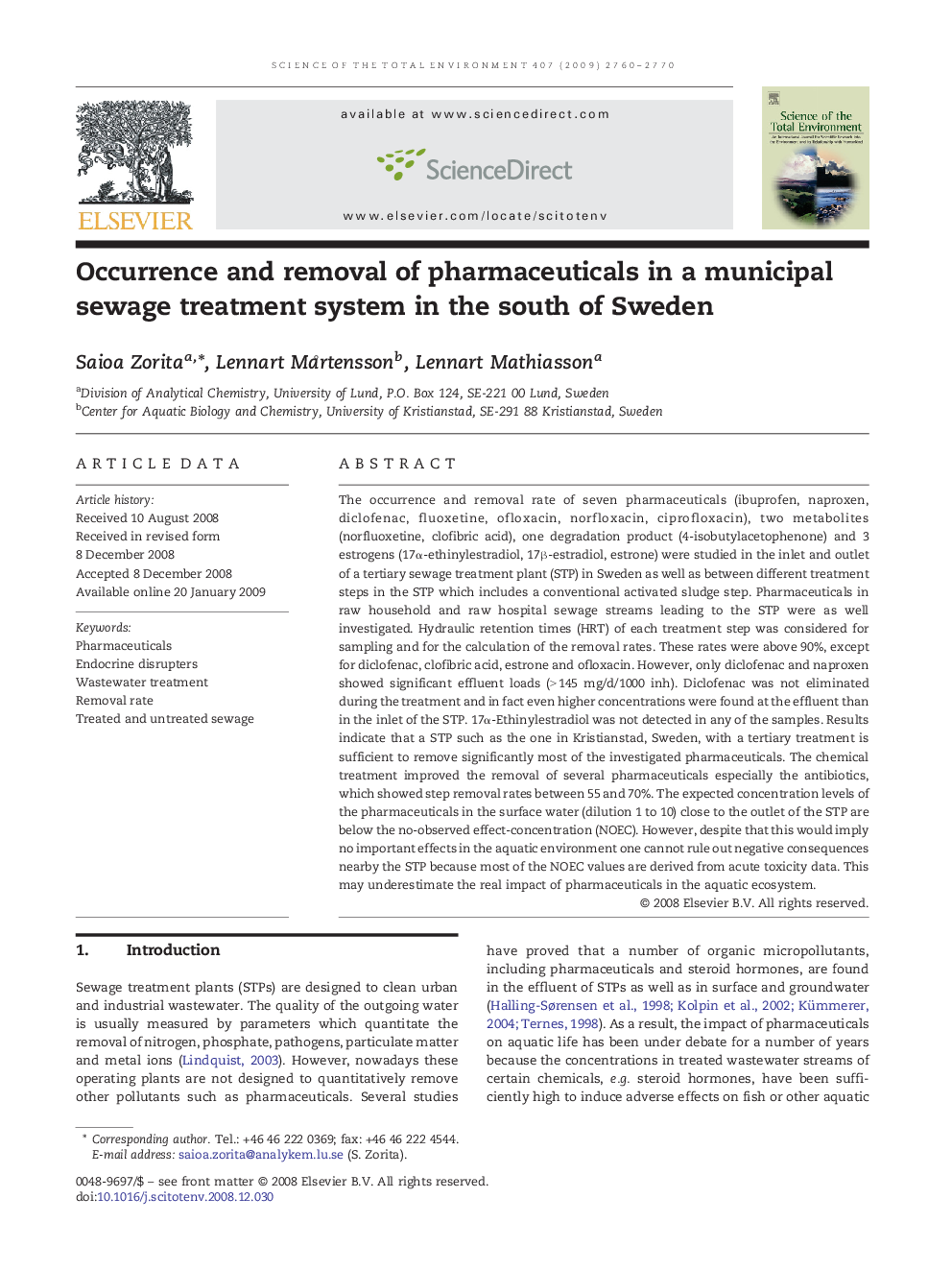| کد مقاله | کد نشریه | سال انتشار | مقاله انگلیسی | نسخه تمام متن |
|---|---|---|---|---|
| 4431964 | 1619902 | 2009 | 11 صفحه PDF | دانلود رایگان |

The occurrence and removal rate of seven pharmaceuticals (ibuprofen, naproxen, diclofenac, fluoxetine, ofloxacin, norfloxacin, ciprofloxacin), two metabolites (norfluoxetine, clofibric acid), one degradation product (4-isobutylacetophenone) and 3 estrogens (17α-ethinylestradiol, 17β-estradiol, estrone) were studied in the inlet and outlet of a tertiary sewage treatment plant (STP) in Sweden as well as between different treatment steps in the STP which includes a conventional activated sludge step. Pharmaceuticals in raw household and raw hospital sewage streams leading to the STP were as well investigated. Hydraulic retention times (HRT) of each treatment step was considered for sampling and for the calculation of the removal rates. These rates were above 90%, except for diclofenac, clofibric acid, estrone and ofloxacin. However, only diclofenac and naproxen showed significant effluent loads (> 145 mg/d/1000 inh). Diclofenac was not eliminated during the treatment and in fact even higher concentrations were found at the effluent than in the inlet of the STP. 17α-Ethinylestradiol was not detected in any of the samples. Results indicate that a STP such as the one in Kristianstad, Sweden, with a tertiary treatment is sufficient to remove significantly most of the investigated pharmaceuticals. The chemical treatment improved the removal of several pharmaceuticals especially the antibiotics, which showed step removal rates between 55 and 70%. The expected concentration levels of the pharmaceuticals in the surface water (dilution 1 to 10) close to the outlet of the STP are below the no-observed effect-concentration (NOEC). However, despite that this would imply no important effects in the aquatic environment one cannot rule out negative consequences nearby the STP because most of the NOEC values are derived from acute toxicity data. This may underestimate the real impact of pharmaceuticals in the aquatic ecosystem.
Journal: Science of The Total Environment - Volume 407, Issue 8, 1 April 2009, Pages 2760–2770